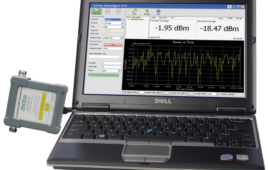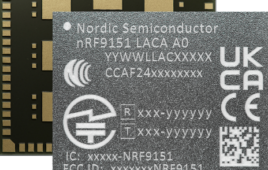Q: What applications are driving the strongest need for innovations in GaN device technology?
Alberto Doronzo, Power Engineer, System Applications, Texas Instruments
Every time a new material with unique properties is discovered, people think of a few obvious applications for it – improvements over old technologies. But a new material also creates opportunities to do things in a new way.
With gallium nitride (GaN) and its exceptional wide-bandgap properties, the same situation applies. What are the obvious applications that can benefit from it? And what new applications can it unlock?
Wireless power: Wireless power has been a promising idea, but has never really taken hold in the consumer market.
Using GaN for wireless power allows the application to easily to reach 6.78MHz included in the Rezence (A4WP) standards. This helps to achieve resonant coupling and freedom of device placement, as well as the flexibility of positioning the receiver components within the device.
LiDAR: As our cars become increasingly independent, precise and fast monitoring of our surroundings becomes vital.
Optical scanning light radar (LiDAR) systems are gaining traction in the automotive industry. Despite their frequency being only in the low MHz range, the pulse width required for increased resolution is just a few nanoseconds long.
GaN is the only material with the capability to deliver such short pulses at voltages up to 40-100V, allowing high definition at long-range to increase safety in avoidance and early warning systems.
SMPS: Finally, all existing power topologies can benefit from GaN’s switching losses compared to silicon. They can operate at higher frequencies and with smaller components, or maintain the same frequency and take advantage of lower switching losses.
High-conversion ratio applications are ideal candidates, allowing new topologies—for instance, direct conversion of 48V to point-of-load (POL) supplies.
Similarly, design of very high frequency (VHF) resonant converters can run at 10-100MHz. At those frequencies, the active power conversion area shrinks significantly.
Thanks to the continuing improvements in the GaN ecosystem (drivers and controllers), the above applications have become possible and are expanding their scope.
Ken Veith, Director of Technology, RF/Microwave & Microelectronics, API Technologies Corp
Once thought of as a technology solely for military, EW and defense programs, GaN has become increasingly more cost-effective for commercial applications. GaN offers concrete benefits over GaAs such as increased power density, efficiency, and better thermal properties which promise higher reliability and operating temperatures.
Traditional military applications such as TWTA (traveling wave tube amplifier) replacements are driving novel thermal design techniques to allow the multi-kilowatt power levels required by those designs but perhaps the most interesting applications are in the commercial/industrial sector.
Applications that are driving this growth in the commercial market space certainly exist in the satcom and wireless communications arenas, but no single area holds more promise than the medical field. The ability to create wireless monitoring, testing and treatment instruments range from sonograms to heart pumps and pacemakers without the need for wired connections within the body. The implementation of GaN devices with the increased power required to enable wireless implantable instruments will reduce both installation cost and medical risk, as well as provide increased mobility for patients. The utilization of GaN devices in these designs combines the need for both high reliability and lower voltage operation and promises the potential need for extremely large volumes of devices. GaN also promises to provide the coolest, most efficient and lowest power consumption LED indicators which will certainly find application in the complete gamut of medical device application.
Preet Virk, Senior Vice President and General Manager, Networks, MACOM
The wireless basestation market is fueling tremendous innovation in GaN technology. LDMOS’ multi-decade dominance in basestation power amplifiers is now being challenged by GaN, and the implications for basestation performance, and operating costs are profound. The clear technology advantages that GaN provides—improved energy efficiency, greater bandwidth, higher power density, smaller form factors—position it as the natural successor to LDMOS for the next generation of basestations, particularly for cellular bands above 1.8 GHz.
Moving forward beyond LDMOS, wireless basestation OEMs are taking a closer look at the relative merits of GaN on Silicon (GaN on Si) and GaN on Silicon Carbide (GaN on SiC) for basestation PAs, assessing their advantages and tradeoffs ranging from performance attributes to costs to supply chain ecosystems.
In terms of performance, it is possible to achieve fourth-generation GaN on Si power transistor efficiency over 70 percent and linear gain of 19 dB at 2.6 GHz, providing 10 percent greater efficiency than legacy LDMOS. Advanced transistor and package design techniques can ensure that the 15 percent to 30 percent delta in thermal conductivity at the Si vs SiC substrate level is effectively negated at the device level. This thermal performance parity translates to comparable reliability in the field at real world basestation operating temperatures of 200°C. Digital pre-distortion is also much easier to implement with GaN on Si devices compared to GaN on SiC, neutralizing the non-linearity issues often introduced in Doherty amplifier implementations.
In terms of costs and supply chain, GaN-based devices will soon be delivered at half the semiconductor cost per watt of comparable LDMOS products—a significantly lower cost than comparably performing GaN on SiC wafers at volume production levels. GaN on SiC will remain at a perpetually higher cost than GaN on Si and is therefore prohibited from mainstream use in commercial basestations.
The high attendant costs of producing SiC dictates that it will be serviced by a small community of high-mix, low-volume fabs that lack the ability to service commercial scale applications particularly at peak demand. In contrast, the industry’s ability to support volume production of GaN on Si, maintain inventories, and accommodate surges in demand is firmly established.
Taking all of these factors into account, fourth-generation GaN on Si strikes the optimal balance of performance, cost effectiveness, and commercial supply chain scalability, distinguishing it as the clear technology platform of choice for the next generation of macro basestations.




